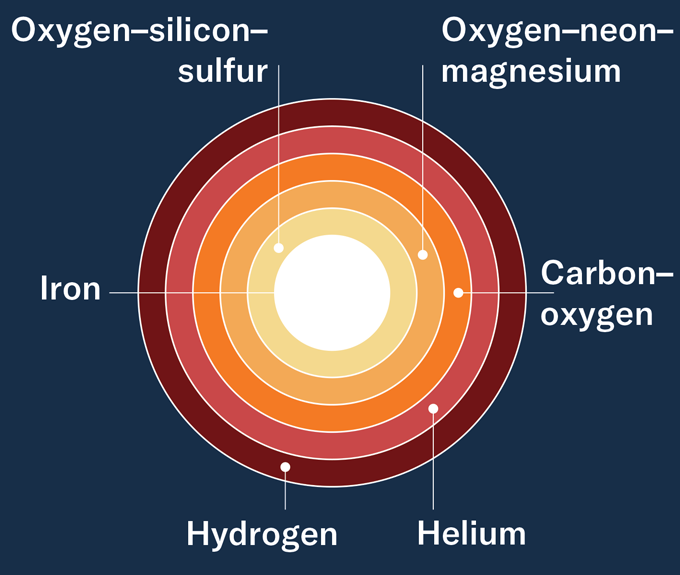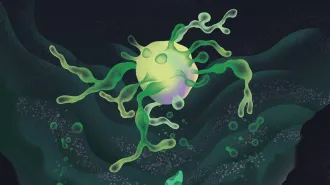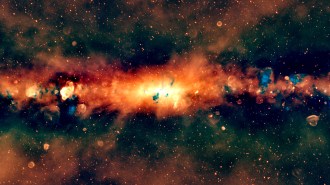A dying star revealed its heart
It’s the first observation of an innermost layer of a massive star
Before exploding, a dying star (illustrated) stripped nearly to its core, according to a new study. The never-before-seen deep layer was probably expelled, and the remaining star’s exploded material may have collided with it, triggering a brilliant glow.
W.M. Keck Observatory, Adam Makarenko








